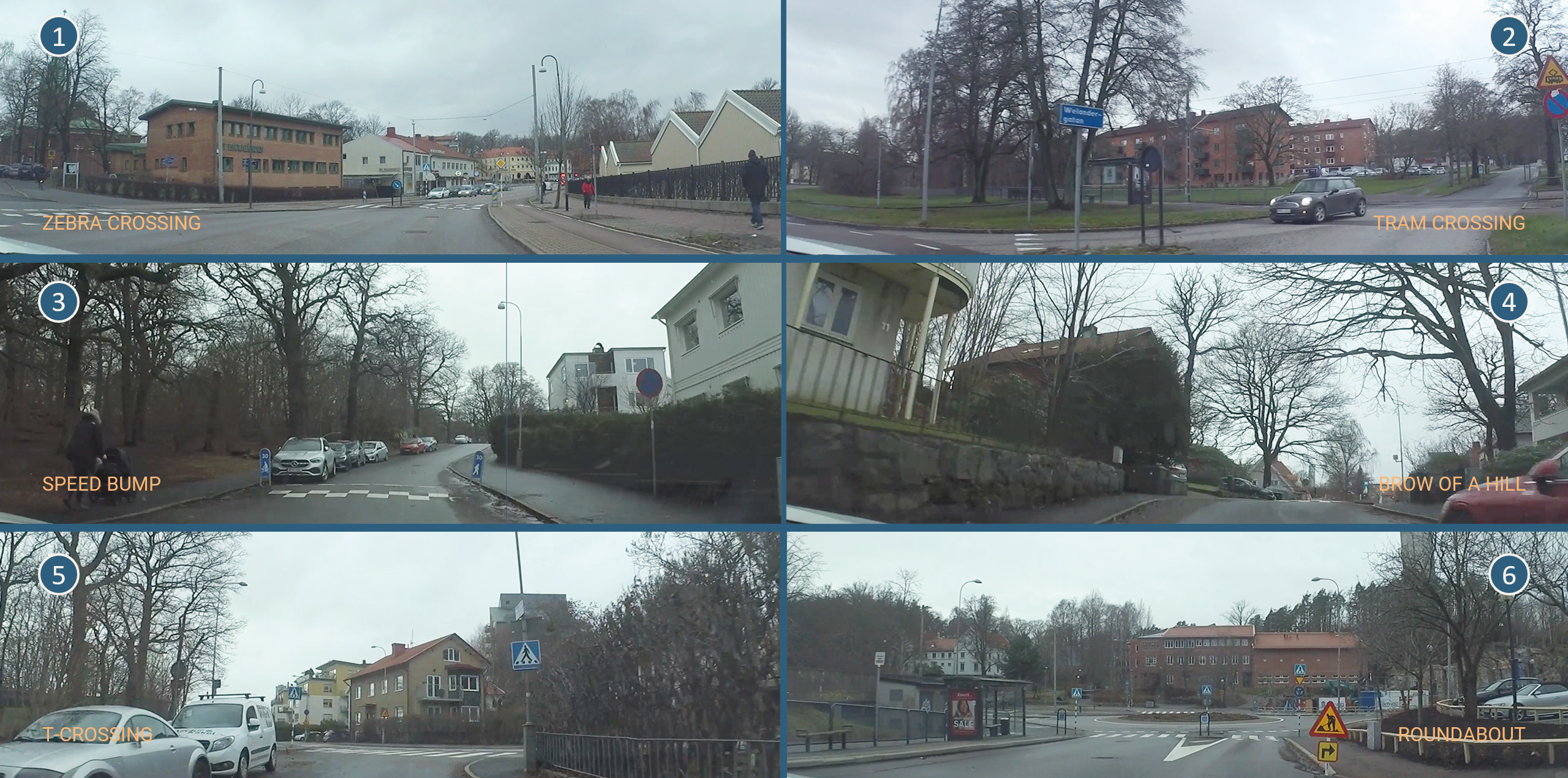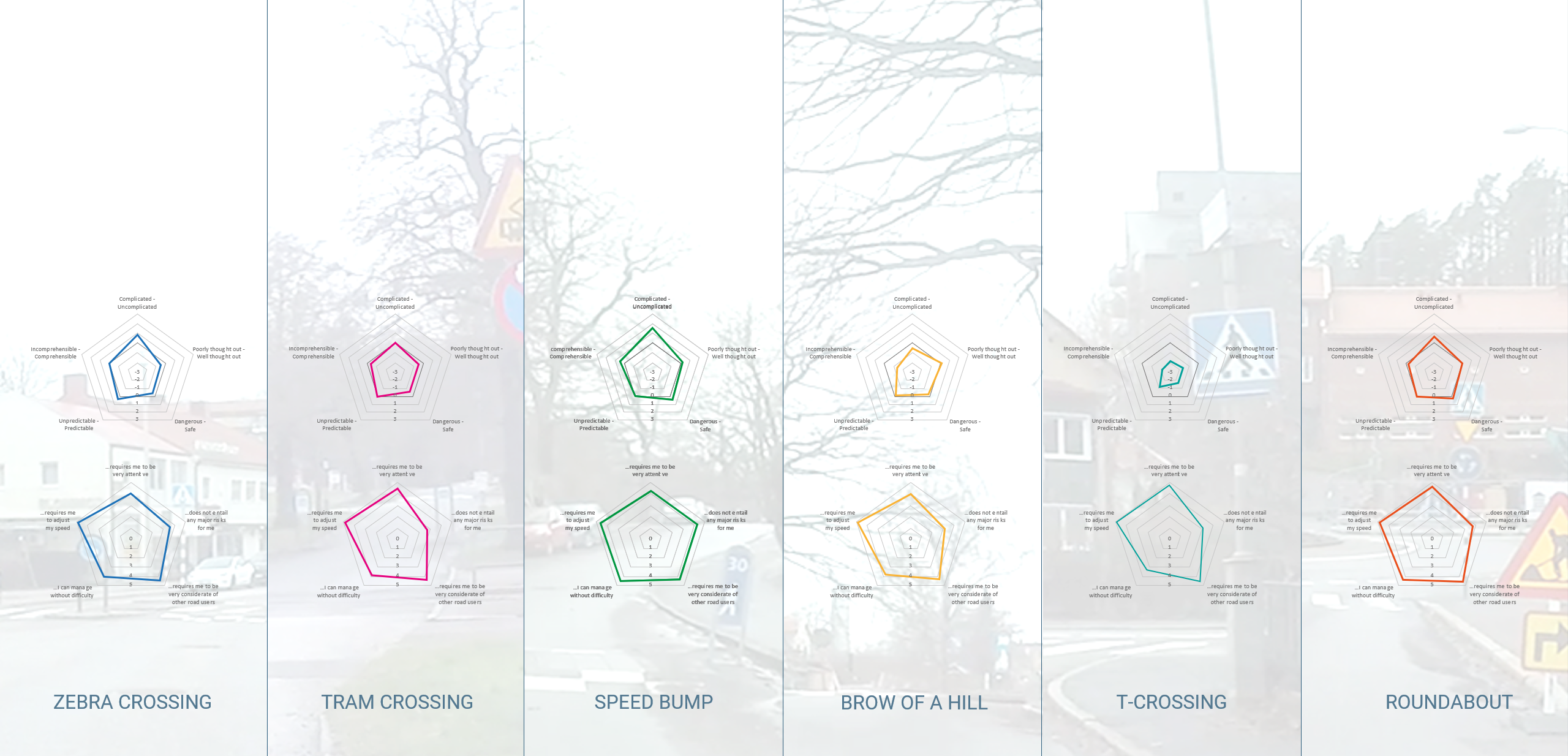
Simulator study that involved eight participants who viewed a pre-recorded video of a driven route and at six pre-defined traffic situations rated their perception and understanding of the situation.
Research on driver behaviour has been a focal point for several decades, with a primary goal of enhancing traffic safety. One approach to ensuring safe traffic has focused on the design of road infrastructure. This study approached traffic environments as semantic constructions to explore the meaning-making processes that shape road users' perceptions of and interactions with traffic environments.
I took part in the planning and conducted and analyzed the study.

Conducted in a basic driving simulator, the study involved eight participants who viewed a pre-recorded video of a driven route, captured from the driver’s perspective. The video was paused at six pre-defined traffic situations: (i) when approaching a zebra crossing at an intersection in a city centre, (ii) a tram crossing, (iii) speed bumps in a residential area, (iv) the brow of a hill, (v) a t-crossing, and (vi) a roundabout after passing a school opposite a bus stop. Throughout the session, participants were encouraged to think aloud, and at each interval, they completed a questionnaire consisting of three parts: (a) a semantic differential scale (+3 to -3 with a neutral 0) consisting of five bi-polar adjectives addressing the participants' characterisation of the respective 3 locations and situations; (b) a 5-point Likert scale with five statements describing driving behavioural responses or perception of risk, to which the participants were asked for their degree of agreement and (c) a 5-point emotional scale.
Three interdependent contextual spheres were identified which influenced the participants’ perception and interpretation of the situations, risks involved, and how they would plan their actions: (a) the broader geographical area; (b) the specific traffic site encompassing dynamic traffic elements (i.e. other road users) and non-dynamic infrastructural elements (road layout, speed bumps, signage, etc.), and (c) the individual and their attributes (e.g. driving experience) as well as their earlier familiarity with the type of - or the specific - traffic site.

The study also revealed that a high degree of visibility and order appeared to communicate less risk and more control. Lower visibility communicated higher risk and less control. This was true for the participants' characterisation of the brow of the hill and the t-crossing communicated similar latent hazards as the line of sight was obscured. Another aspect that appeared to influence how the participants interpreted the site was whether the site was recognised, came with clear traffic rules, and whether participants expected other road users to comply with these rules. The spatial configuration and priority rules that apply to roundabouts resulted in participants characterising the site as 'predictable'.
Sites with unfamiliar road signs or infrastructural elements resulted in uncertainty as to what traffic rules should apply and, therefore, how other road users would behave. For example, the speed bump communicated "slow down", but the road signs, in combination with the white road markings, caused confusion. The participants became uncertain if this was - or not - a pedestrian crossing where cars should give way.

Karlsson, I.C.M., & Johansson, M. (2024). Understanding drivers' interaction with traffic environments - A traffic semantic approach. Advances in Transportation Studies, XX. https://doi.org/10.54941/ahfeXXXX (To be published)